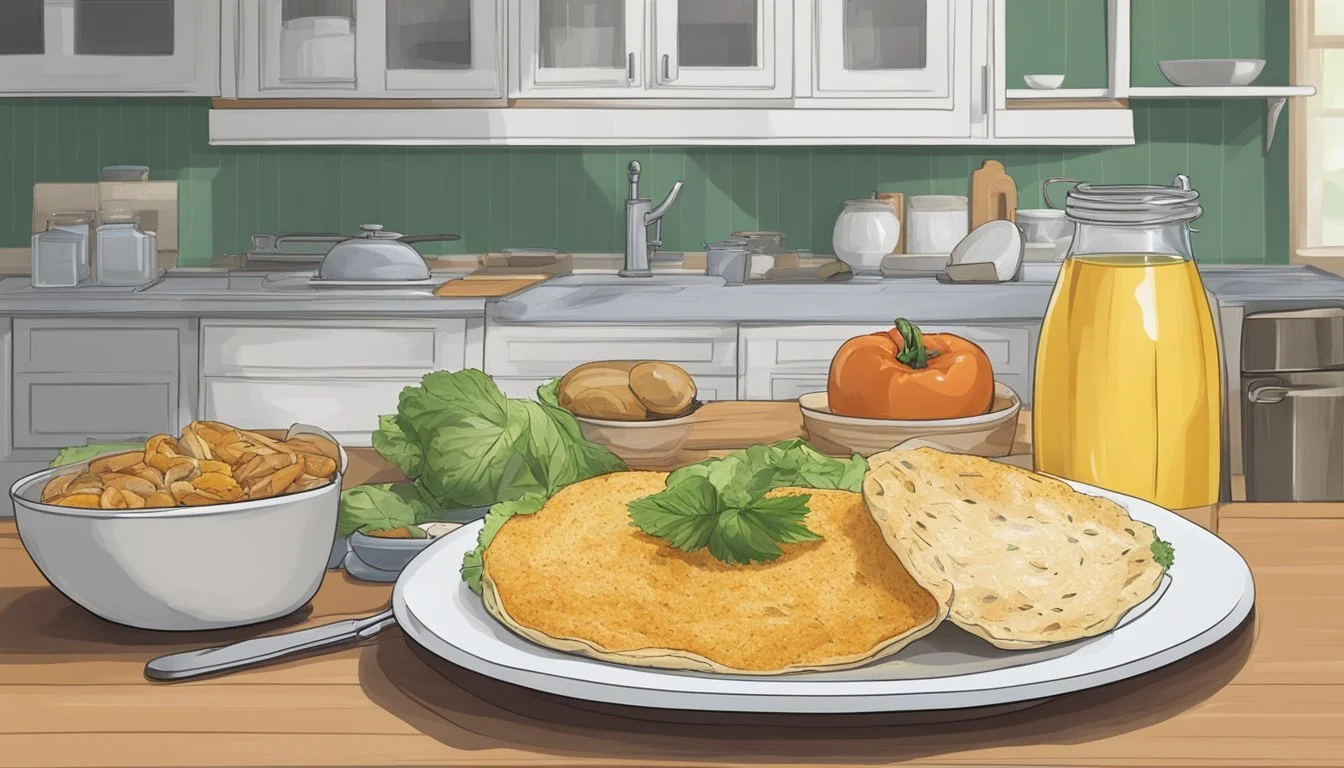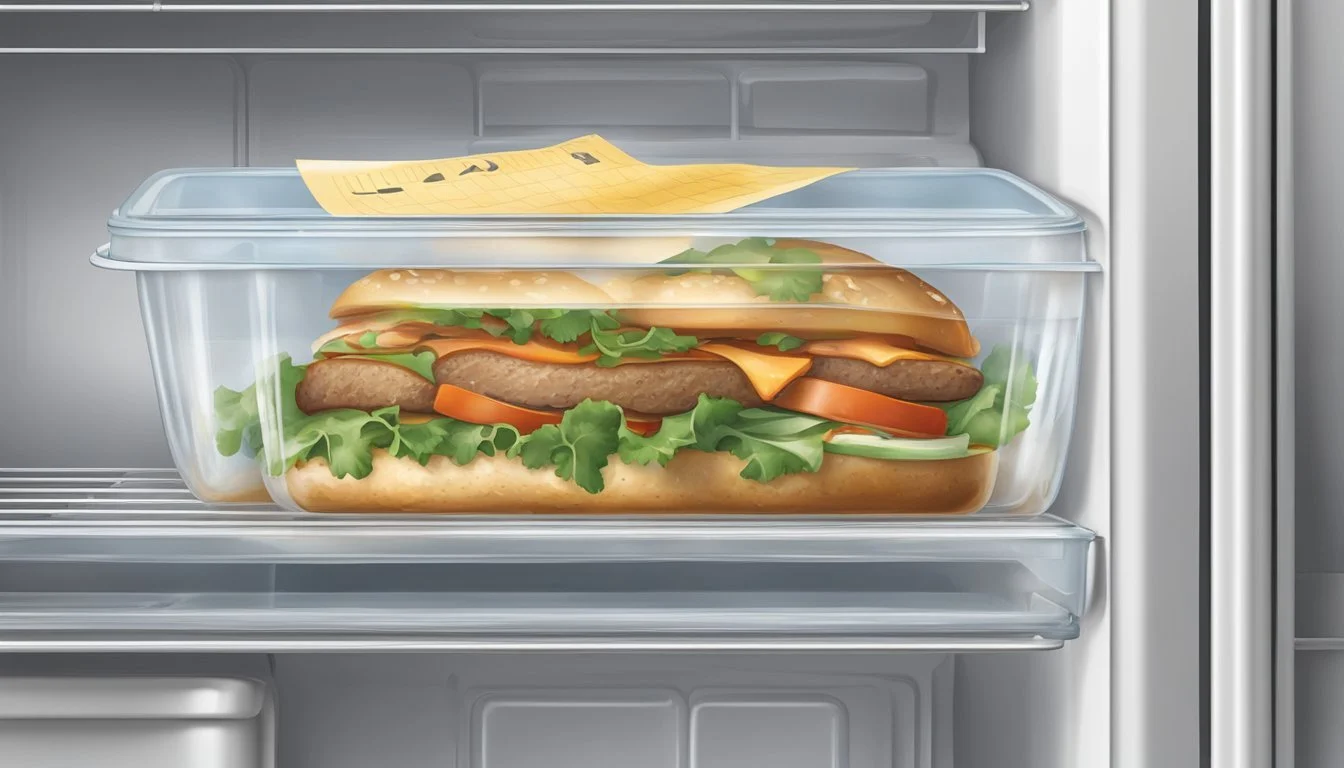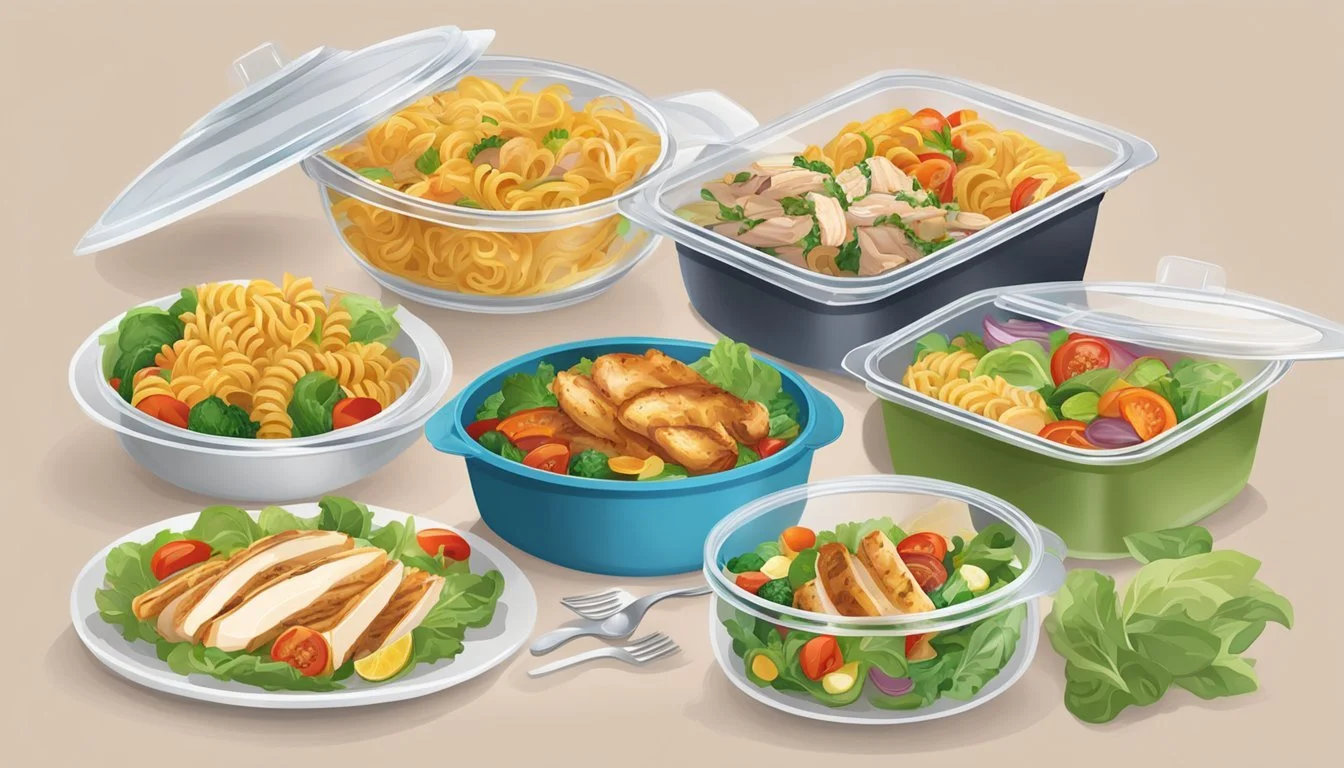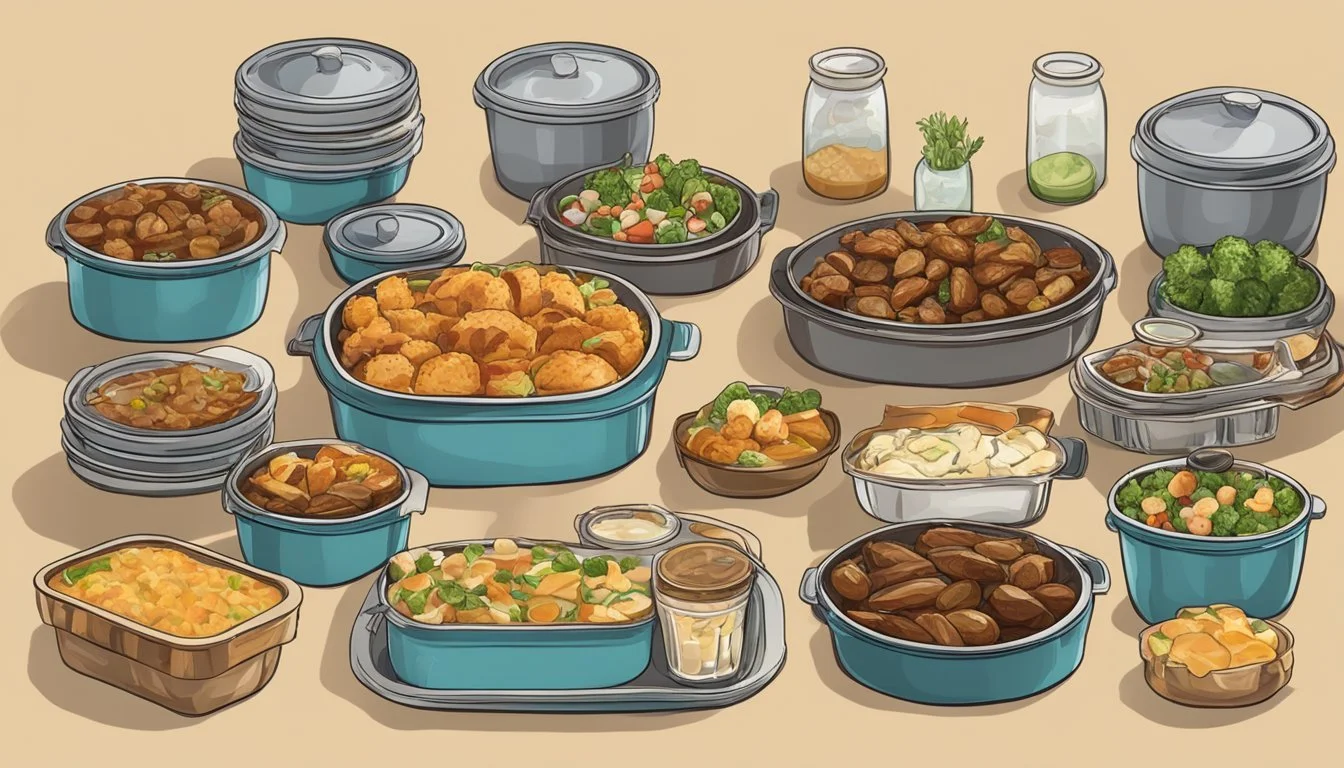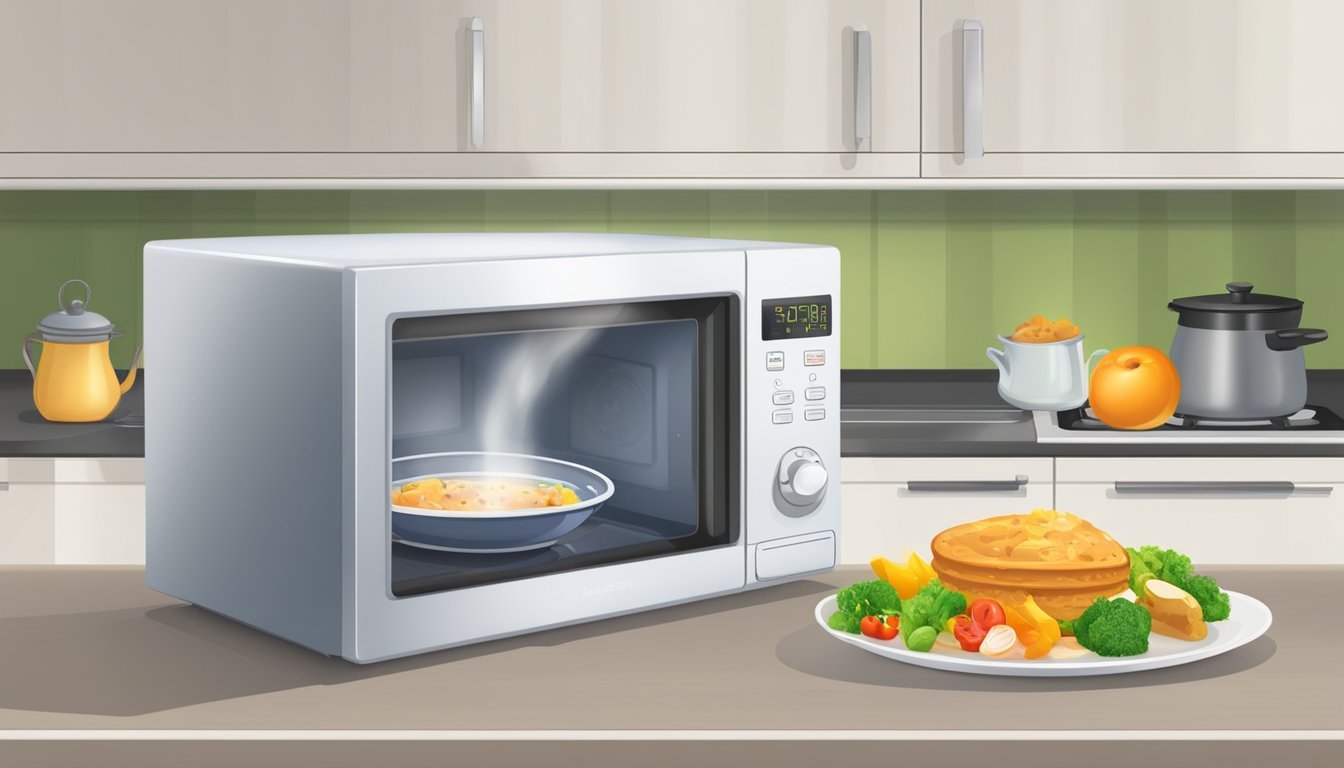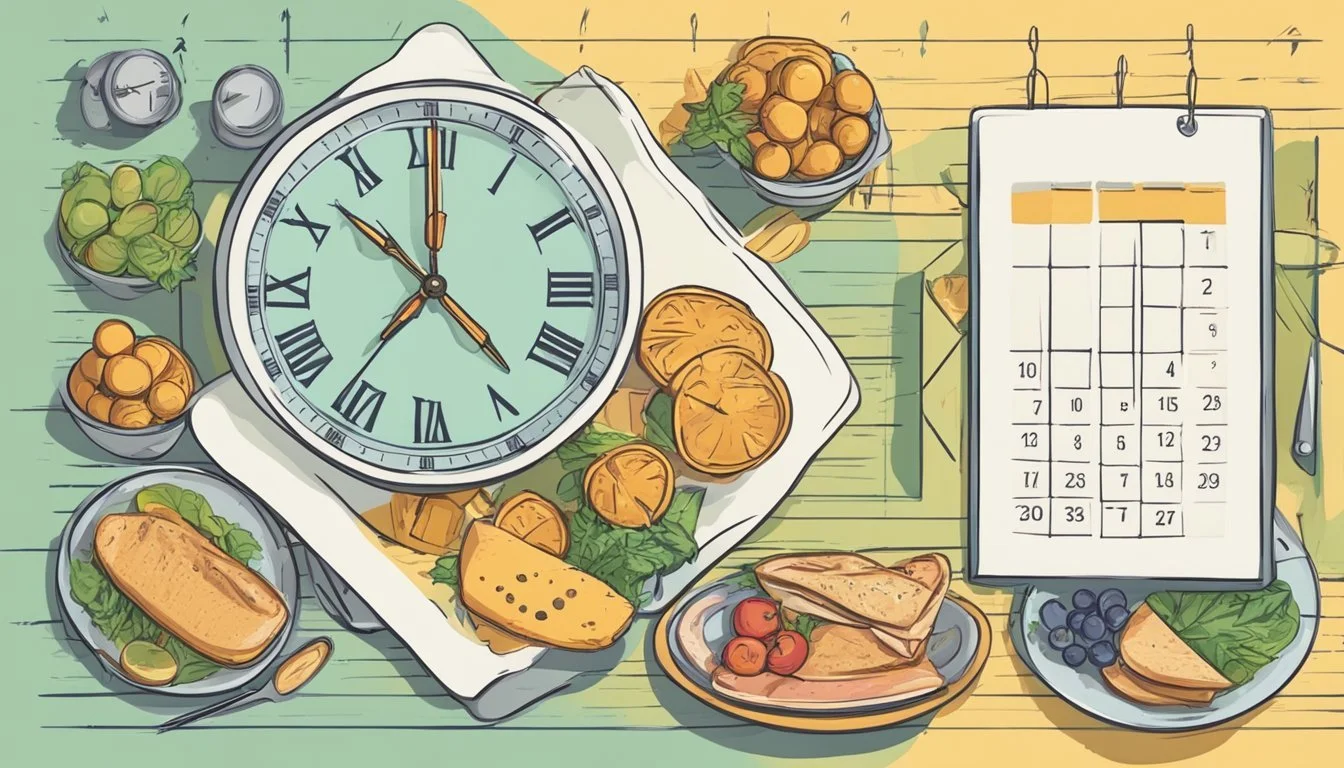How Long Do Cooked Meals Last?
Shelf Life and Safety Tips
Understanding the shelf life of cooked meals is crucial for both food safety and minimizing waste. Once cooked, different foods have varying refrigeration lifespans, which are critical to observe to ensure leftovers remain safe to consume. The general rule is that cooked leftovers should be eaten within 3 to 4 days when stored in the refrigerator at or below 40°F. However, this timeframe can vary based on the type of food; some may remain safe slightly longer, while others should be consumed more quickly.
The longevity of cooked foods in the refrigerator is shaped by factors such as the initial food quality, the method of cooking, the cooling process, and the way they are stored. For instance, cooked poultry and seafood are ideally consumed within 2 to 4 days, while certain preparations of eggs, like hard-boiled eggs, can last up to a week when refrigerated properly. Cooling cooked foods swiftly and storing them in airtight containers can extend their safe consumption period and help maintain their quality.
Storage practices also play a significant role in maintaining the safety and quality of cooked meals. Leftovers should be placed in the refrigerator promptly—usually within two hours of cooking. On hotter days, with temperatures at or above 90°F, this window reduces to just one hour. Adhering to these guidelines helps to hinder the growth of pathogenic bacteria that can cause foodborne illness, ensuring that one enjoys their meals not only at their best quality but also without risking their health.
Understanding Food Safety
When it comes to food safety, one's health hinges on understanding and preventing food poisoning and bacterial contamination. This knowledge is crucial for ensuring that food remains safe to eat.
Basics of Food Poisoning
Food poisoning occurs when individuals consume foods contaminated with pathogenic bacteria, viruses, or toxins. The symptoms can range from mild discomfort to serious, life-threatening illnesses. Pathogens like Salmonella, E. coli, and Listeria are common culprits. Prevention is largely reliant on proper food handling, cooking, and storage practices, which can inhibit the growth of harmful microorganisms.
Harmful Bacteria and Contamination
Harmful bacteria, responsible for foodborne illness, thrive particularly in the Danger Zone—between 40°F and 140°F (4°C and 60°C). Contamination can occur at any point from farm to table, including during processing, transportation, or preparation.
Environment Effect on Bacteria Growth Below 40°F (Refrigeration) Slows down growth Above 140°F (Cooking) Kills most harmful bacteria 40°F - 140°F (Danger Zone) Rapid bacterial growth
Refrigerating food promptly and adequately is essential in deterring bacteria proliferation. The USDA advises that refrigerated cooked leftovers should be consumed within 3 to 4 days to minimize the risk of foodborne illness. If foods are left unrefrigerated for more than two hours, or one hour if the temperature exceeds 90°F, they become unsafe to eat and should be discarded.
Storage Guidelines
Proper storage of cooked meals is crucial for maintaining food safety and quality. The refrigerator and freezer are key appliances in preserving the integrity of your leftovers and preventing foodborne illness.
Refrigerator Use
Cooked meals should be stored in the refrigerator within two hours of cooking to prevent the growth of harmful bacteria. These meals are generally safe to consume within 3 to 4 days if kept at a constant temperature of 40°F (4°C) or below. To ensure safety and quality:
Date Labeling: Always label leftovers with an expiration date.
Containers: Use airtight containers to prevent contamination and moisture loss.
Freezer Storage Tips
The freezer affords a longer preservation option by keeping cooked meals at 0°F (-18°C) or below, which keeps food safe indefinitely; however, the quality may diminish over time. Adhering to freezer storage tips ensures that meals retain their texture, flavor, and nutritional value:
Packing: Use freezer-safe containers or heavy-duty freezer bags.
Portioning: Freeze meals in portions you will use upon thawing to avoid unnecessary defrosting and refreezing.
Defrosting: Thaw frozen meals in the refrigerator and not at room temperature to maintain safety.
Labeling: Clearly mark containers with the content and the date of freezing.
Specific Food Types
The shelf life of cooked meals varies significantly across different food types. It is crucial to store foods properly to maximize freshness and ensure food safety. Here, we cover the expected refrigeration times for an array of cooked food categories.
Meat and Poultry
Steak: Typically lasts for up to 4 days in the fridge.
Chicken: Can be safe to consume for 1-2 days post-cooking.
Turkey: Remains good for 1-2 days when refrigerated.
Ground Meat: Such as ground beef, should be consumed within 3-4 days.
Bacon: May last up to 4 days if stored correctly.
Sausage: Cooked poultry sausage retains quality for about 4 days.
Dairy Products
Milk: Keep refrigerated; it generally stays fresh for 5-7 days past the "sell by" date if opened.
Butter: Can last a reasonable amount of time, typically up to 2 weeks.
Yogurt: Often safe to eat for 1-2 weeks beyond the sell-by date when stored properly.
Produce and Vegetables
Broccoli, Spinach, Lettuce: Usually maintain freshness for 3-5 days.
Mushrooms, Cucumbers, Tomatoes (if refrigerated post-cooking): Can last between 3-7 days.
Garlic: Cooked garlic can be kept in the refrigerator for up to 1 week.
Grains and Pasta
Rice and Pasta: Should be consumed within 3-5 days to ensure quality and safety.
Quinoa, Lentils: These grains can stay fresh for 4-7 days when cooked and refrigerated.
Baked Goods
Bread: Best consumed within 3-4 days; to extend shelf life, freezing is recommended.
Cakes, Cookies: Typically last between 3-7 days depending on the ingredients used.
Muffins: Should be enjoyed within 2-3 days.
Other Perishables
Eggs (Cooked): Hard-boiled eggs can remain safe for consumption up to 7 days.
Soups and Stews: Typically remain safe to eat for 3-4 days.
Tofu: Once cooked, tofu can be stored for 3-5 days in the refrigerator.
Leftover Casseroles: Generally maintain quality for 3-4 days.
Salad Dressing, Mayo: Store-bought versions can last up to 3 months; homemade should be used within 1 week.
Health and Nutrition
When individuals prepare their meals ahead of time, they gain control over both nutritional content and food safety. This control can result in significant benefits to their health, but they must also be aware of the risks associated with consuming expired foods.
Benefits of Meal Prepping
Meal prepping simplifies the decision-making process regarding what to eat, making it easier to maintain a balanced diet. By planning meals in advance, individuals are more likely to include a variety of nutrients necessary for good health. For instance, they can ensure that each prepared meal includes:
Proteins: for muscle repair and growth
Carbohydrates: for energy
Fats: for cell function and energy storage
Vitamins and Minerals: for numerous bodily functions
Food safety is inherently linked to meal prepping, as it involves safely storing meals to prevent spoilage. Prepped meals should be refrigerated or frozen within 2 hours of cooking to minimize the risk of bacterial growth, which can lead to foodborne illnesses.
Risks of Expired Foods
Consuming foods past their safe storage time frame can put individuals at risk for foodborne illnesses. Pathogenic bacteria, which are responsible for these illnesses, can grow even in refrigerated conditions, albeit at a slower rate. The United States Department of Agriculture (USDA) recommends consuming cooked leftovers within 3 to 4 days. Here are specific risks linked to consuming expired foods:
Pathogenic Bacteria: Can cause symptoms like nausea, vomiting, and diarrhea.
Spoilage Bacteria: Lead to off-odors, flavors, and textures, making food unappetizing.
Individuals should ensure strict adherence to these time frames, especially during warmer seasons, when the time for safe consumption can decrease. For instance, if the ambient temperature reaches 90 degrees Fahrenheit or above, the window for refrigeration shortens to just 1 hour post-cooking.
Practical Tips for Food Longevity
Preserving the quality and safety of cooked meals is crucial in reducing food waste and avoiding health risks. This section provides strategies for extending the shelf life of your food through proper storage methods and practices.
Proper Food Labeling
Labeling is essential for tracking the freshness of your food. One should always label their leftovers with the content and the date of refrigeration. To facilitate this, the use of waterproof labels or wax pencils on containers is recommended. The simple act of labeling can help prevent both the consumption of spoiled food and unnecessary waste.
Food Item Refrigeration Date Cooked Chicken 03/07/2024 Meal Prep Pasta 03/05/2024 Baked Salmon 03/06/2024
Effective Meal Rotation
To ensure leftovers are consumed before spoiling, one should practice the "first in, first out" (FIFO) method. This involves organizing the refrigerator so that older items are in the front and easily accessible. They must prioritize these older items when choosing which leftovers to eat next, thus minimizing potential food waste.
Optimizing Leftover Consumption
One can optimize leftover consumption by planning meals that are flexible with various ingredients. They should aim to create dishes that incorporate any remnants from prior meals, ensuring these ingredients are utilized before spoilage. This helps to not only reduce food waste but also sparks creativity in meal preparation.
Day Meal Incorporating Leftovers Monday Chicken Caesar Salad Tuesday Pasta Bake with Vegetables Wednesday Salmon Fried Rice
Cooking and Reheating Foods
Proper techniques in the kitchen are crucial for maintaining the safety and freshness of meals. Reheating meals needs particular attention to temperature, while storing them requires careful handling to maximize freshness.
Safely Reheating Meals
When reheating meals, the key is to reach an internal temperature of 165 °F to ensure that any potential bacteria are destroyed. For example, chili, when stored correctly, can be safely reheated on the stove by bringing it to a boil to achieve this critical temperature.
Microwave: For items like hot dogs or leftovers that may dry out, cover them with a damp paper towel to keep them moist. Use a microwave-safe container and vent with a small opening to allow steam to escape.
Oven: Sheet pan meals should be covered with foil and reheated at a moderate temperature, typically around 250 °F, to warm through evenly without drying out.
Maximizing Meal Freshness
To maximize the freshness of cooked meals, timing, and proper storage play critical roles.
Refrigeration: Cooked meals such as chili should be stored in the refrigerator within two hours of cooking and enjoyed within three to four days.
Not for Reheating: Some items like green salads or overnight oats are not meant to be reheated and should be stored in the fridge to be eaten cold.
For the best quality, one should consider:
Cooling: Let food cool to room temperature before refrigerating to prevent the growth of bacteria.
Airtight Containers: Store meals in airtight containers to keep out moisture and other contaminants.
Separation: Keep raw and cooked foods separate to prevent cross-contamination.
Following these guidelines helps keep meals safe and as flavorful as when they were first made.
Estimated Shelf Life of Cooked Meals
Proper storage of cooked meals is crucial to maintain food safety and quality. The shelf life varies significantly based on the type of meal and its ingredients.
Common Meals and Lifespan
Chicken (cooked): Generally lasts for 1-2 days in the fridge. A rotisserie chicken should follow the same guideline.
Eggs (cooked): Hard-boiled eggs can be refrigerated for up to 1 week.
Fish (cooked): Safe to eat for 3-4 days. This includes popular items like cooked shrimp.
Beef (cooked): Dishes such as steaks last about 3-4 days if refrigerated.
Pork and Lamb (cooked): Cooked dishes like chops and ribs are good for 3-4 days in the fridge.
Salads: If containing protein like chicken or shrimp, they typically last up to 3-5 days.
Variation by Ingredients
The ingredients of a dish can affect its longevity in the fridge. Meals containing dairy, for instance, may spoil quicker. Likewise, recipes with high moisture content, such as soups or stews, can last for up to seven days. Meals made as staples like rice or pasta generally stay fresh for four days when properly stored. It's important to note that all leftovers should be stored in airtight containers and refrigerated within two hours of cooking.
Conclusion
In dtermining the shelf-life of cooked meals (how long do cooked meals last?), numerous factors are at play. A general rule is that most cooked foods are safe to eat for up to four days when stored in the refrigerator. It is important to acknowledge, however, that these time frames are dependent on the storage temperature being maintained at 40°F (4°C) or below, which inhibits bacterial growth.
For specific types of cooked foods, the following guidelines are helpful:
Poultry and ground beef: consume within 3 to 4 days
Steak and fish: consume within 4 days
Hard-boiled eggs: consume within 7 days
Beyond these durations, there's an increasing risk of foodborne illnesses due to the potential growth of pathogenic bacteria. It's always important to adhere to food safety recommendations and check for any signs of spoilage, such as off odors or textures, before consumption.
The freezer extends the shelf life of cooked foods significantly, often up to six months. Nevertheless, one cannot rely solely on the expiration date. Food safety is about ensuring that meals consumed are not merely based on the date, but also on visual and olfactory inspection to confirm that no spoilage has occurred.
In terms of reheating, cooked foods that have been properly stored in the refrigerator should be heated to an internal temperature of 165°F (74°C) to kill any potential bacteria.
Consumers are advised to label and date their leftovers, and to always employ safe food handling practices, such as using a food thermometer to check temperatures and avoiding cross-contamination during meal preparation.

